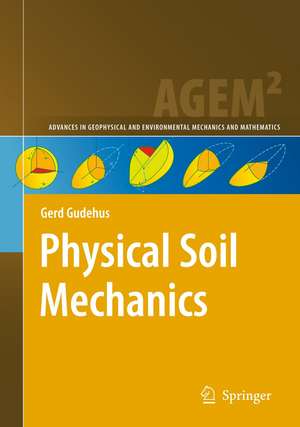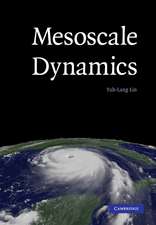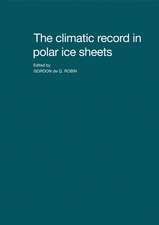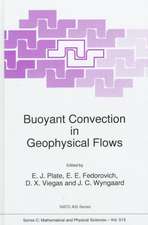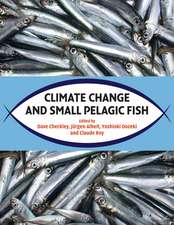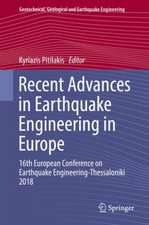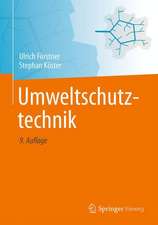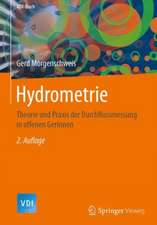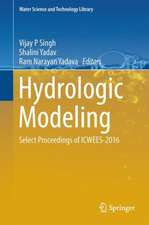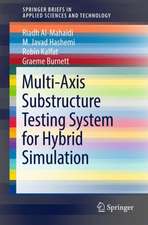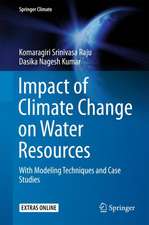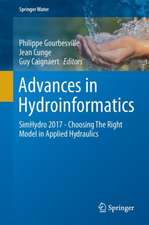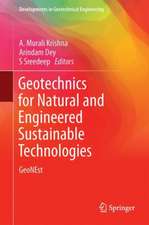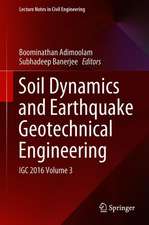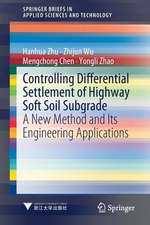Physical Soil Mechanics: Advances in Geophysical and Environmental Mechanics and Mathematics
Autor Gerd Gudehusen Limba Engleză Hardback – 24 ian 2011
| Toate formatele și edițiile | Preț | Express |
|---|---|---|
| Paperback (1) | 1163.47 lei 38-44 zile | |
| Springer Berlin, Heidelberg – 23 aug 2016 | 1163.47 lei 38-44 zile | |
| Hardback (1) | 1850.21 lei 3-5 săpt. | |
| Springer Berlin, Heidelberg – 24 ian 2011 | 1850.21 lei 3-5 săpt. |
Din seria Advances in Geophysical and Environmental Mechanics and Mathematics
- 24%
 Preț: 797.80 lei
Preț: 797.80 lei - 15%
 Preț: 643.84 lei
Preț: 643.84 lei - 15%
 Preț: 642.51 lei
Preț: 642.51 lei - 18%
 Preț: 953.35 lei
Preț: 953.35 lei - 18%
 Preț: 1679.57 lei
Preț: 1679.57 lei - 15%
 Preț: 644.18 lei
Preț: 644.18 lei - 18%
 Preț: 1222.31 lei
Preț: 1222.31 lei - 18%
 Preț: 940.25 lei
Preț: 940.25 lei - 18%
 Preț: 947.67 lei
Preț: 947.67 lei - 18%
 Preț: 939.12 lei
Preț: 939.12 lei - 18%
 Preț: 1217.41 lei
Preț: 1217.41 lei - 15%
 Preț: 639.25 lei
Preț: 639.25 lei - 15%
 Preț: 642.03 lei
Preț: 642.03 lei - 15%
 Preț: 651.02 lei
Preț: 651.02 lei - 18%
 Preț: 963.91 lei
Preț: 963.91 lei - 18%
 Preț: 967.88 lei
Preț: 967.88 lei - 15%
 Preț: 650.69 lei
Preț: 650.69 lei - 24%
 Preț: 542.12 lei
Preț: 542.12 lei - 18%
 Preț: 1242.83 lei
Preț: 1242.83 lei - 18%
 Preț: 1220.12 lei
Preț: 1220.12 lei - 15%
 Preț: 637.46 lei
Preț: 637.46 lei
Preț: 1850.21 lei
Preț vechi: 2256.35 lei
-18% Nou
Puncte Express: 2775
Preț estimativ în valută:
354.08€ • 384.48$ • 297.43£
354.08€ • 384.48$ • 297.43£
Carte disponibilă
Livrare economică 01-15 aprilie
Preluare comenzi: 021 569.72.76
Specificații
ISBN-13: 9783540363538
ISBN-10: 354036353X
Pagini: 850
Ilustrații: XIII, 840 p.
Dimensiuni: 155 x 235 x 51 mm
Greutate: 1.41 kg
Ediția:2011
Editura: Springer Berlin, Heidelberg
Colecția Springer
Seria Advances in Geophysical and Environmental Mechanics and Mathematics
Locul publicării:Berlin, Heidelberg, Germany
ISBN-10: 354036353X
Pagini: 850
Ilustrații: XIII, 840 p.
Dimensiuni: 155 x 235 x 51 mm
Greutate: 1.41 kg
Ediția:2011
Editura: Springer Berlin, Heidelberg
Colecția Springer
Seria Advances in Geophysical and Environmental Mechanics and Mathematics
Locul publicării:Berlin, Heidelberg, Germany
Public țintă
Professional/practitionerCuprins
Prologue.- introduction.- simple psammoids.- simple peloids.- psammoids with reversals.- peloids with reversals.- pore fluid.- bridging gaps.- localization.- fabric.- boundary conditions.- one-dimensional evolutions.- plane-parallel evolutions without ssi.- plane-parallel evolutions with ssi.- axi-symmetric evolutions.- less symmetric evolutions.- critical phenomena.- epilogue.- references.- symbols and acronyms.
Notă biografică
Gerd Gudehus studied civil engineering in Berlin, where he also completed his doctoral thesis in soil mechanics. In 1973, he became full professor and chairman of the Department of Soil Mechanics and Foundation Engineering at the Institute of Soil and Rock Mechanics, Karlsruhe University. He is head of the Soil Mechanics Section of the German National Geotechnical Society and is engaged in the conservation and restoration of historical retaining walls and in the stabilization of the foundations of historical buildings situated on soft ground.
Textul de pe ultima copertă
Soil is matter in its own right. Its nature can be captured by means of monotonous, cyclic and strange attractors. Thus material properties are defined by the asymptotic response of sand- and clay-like samples to imposed deformations and stresses. This serves to validate and calibrate elastoplastic and hypoplastic relations with comparative plots. Extensions capture thermal and seismic activations, limitations occur due to localizations and skeleton decay.Attractors in the large characterize boundary value problems from model tests via geotechnical operations up to tectonic evolutions. Validations of hypoplastic calculations are shown with many examples, possible further applications are indicated in detail. This approach is energetically justified and limited by critical points where the otherwise legitimate continuity gets lost by localization and decay. You will be fascinated by the fourth element although or just as it is so manifold.
Caracteristici
Soils are complex in composition, state and behaviour Graphical representation helps to lighten the constitutive relations The concept of related evolutions of state and shape works throughout more complex boundary value problems It is a powerful tool which is useful for the description of soils and their properties Includes supplementary material: sn.pub/extras
